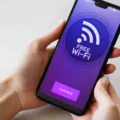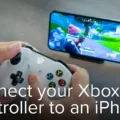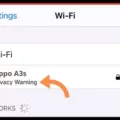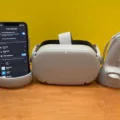In today’s digital age, access to the internet has become an essential part of our daily lives. Whether it’s for work, entertainment, or staying connected with loved ones, having a reliable internet connection is crucial. However, not everyone has access to an internet service provider, and this is where Wi-Fi comes in.
Wi-Fi is a technology that allows devices to connect to the internet wirelessly. It uses radio waves to transmit data between devices and a router. Most homes and offices have Wi-Fi routers that are connected to an internet service provider, providing internet access to multiple devices at once.
But what if you don’t have an internet service provider? Can you still get Wi-Fi? The answer is yes, and there are several methods you can use to get Wi-Fi without an internet service provider.
Method 1: Mobile Hotspot
One of the best ways to get Wi-Fi without an internet service provider is to use a mobile hotspot. Almost all cellular tablets and smartphones have a Wi-Fi hotspot capability that lets you use them as a temporary Wi-Fi router. By connecting additional devices to the device hotspot, you can get Wi-Fi without an internet provider.
To turn your smartphone into a Wi-Fi hotspot, go to Settings, then toggle “Personal Hotspot” on. Once you do, you’ll be given a Wi-Fi password. On Android devices, the process can differ a little depending on your phone’s model. Go to Settings, then look for a menu for networks or connections.
Method 2: Tether Your Smartphone or Tablet
Another way to get Wi-Fi without an internet service provider is to tether your smartphone or tablet. Tethering allows you to use your phone’s data plan to connect other devices to the internet. This method can be useful if you have a limited data plan or if you only need to use the internet for a short period of time.
To tether your smartphone or tablet, go to Settings, then look for a menu for networks or connections. Select “Tethering & portable hotspot,” then toggle “Portable Wi-Fi hotspot” on. Once you do, you’ll be given a Wi-Fi password that you can use to connect other devices to the internet.
Method 3: Find a Public Wi-Fi Network
There are many public Wi-Fi networks available in cafes, libraries, airports, and other public places. These networks are free to use and can provde you with internet access without an internet service provider. However, you should be cautious when using public Wi-Fi networks as they may not be secure.
Method 4: Use a Wi-Fi USB Dongle
A Wi-Fi USB dongle is a small device that you can plug into your laptop or desktop computer to provide it with Wi-Fi connectivity. These dongles come with a SIM card slot, allowing you to use a data plan to get Wi-Fi without an internet service provider.
Method 5: Share Someone’s Internet
If you have a neighbor or friend who has an internet service provider, you can ask them to share their internet with you. This method is not recommended, as it can put a strain on their internet connection and may violate their terms of service.
Getting Wi-Fi without an internet service provider is possible, and there are several methods you can use. Whether you use a mobile hotspot, tether your smartphone, find a public Wi-Fi network, use a Wi-Fi USB dongle, or share someone’s internet, you can stay connected to the internet without an internet service provider.
Running WiFi Without an Internet Provider
You can run WiFi without an internet provider by setting up a local wireless network using a router or a mobile hotspot. A router is a device that creates a local network by connecting to your modem or broadband connection. You can then connect your devices to the router’s WiFi network and access the internet trough your broadband connection. However, if you don’t have an internet connection, you can still use the router to create a local network and share files and resources between devices.
Another option is to use a mobile hotspot, which allows you to create a WiFi network using your cellular data plan. This is a convenient option if you’re traveling or don’t have access to a broadband connection. You can connect your devices to the hotspot’s WiFi network and access the internet through your cellular data plan. Keep in mind that using a mobile hotspot can quickly use up your data plan, so it’s important to monitor your usage and adjust your plan accordingly.
You can run WiFi without an internet provider by setting up a local network using a router or a mobile hotspot. Both options allow you to connect your devices to a WiFi network and access the internet, either through a broadband connection or a cellular data plan.
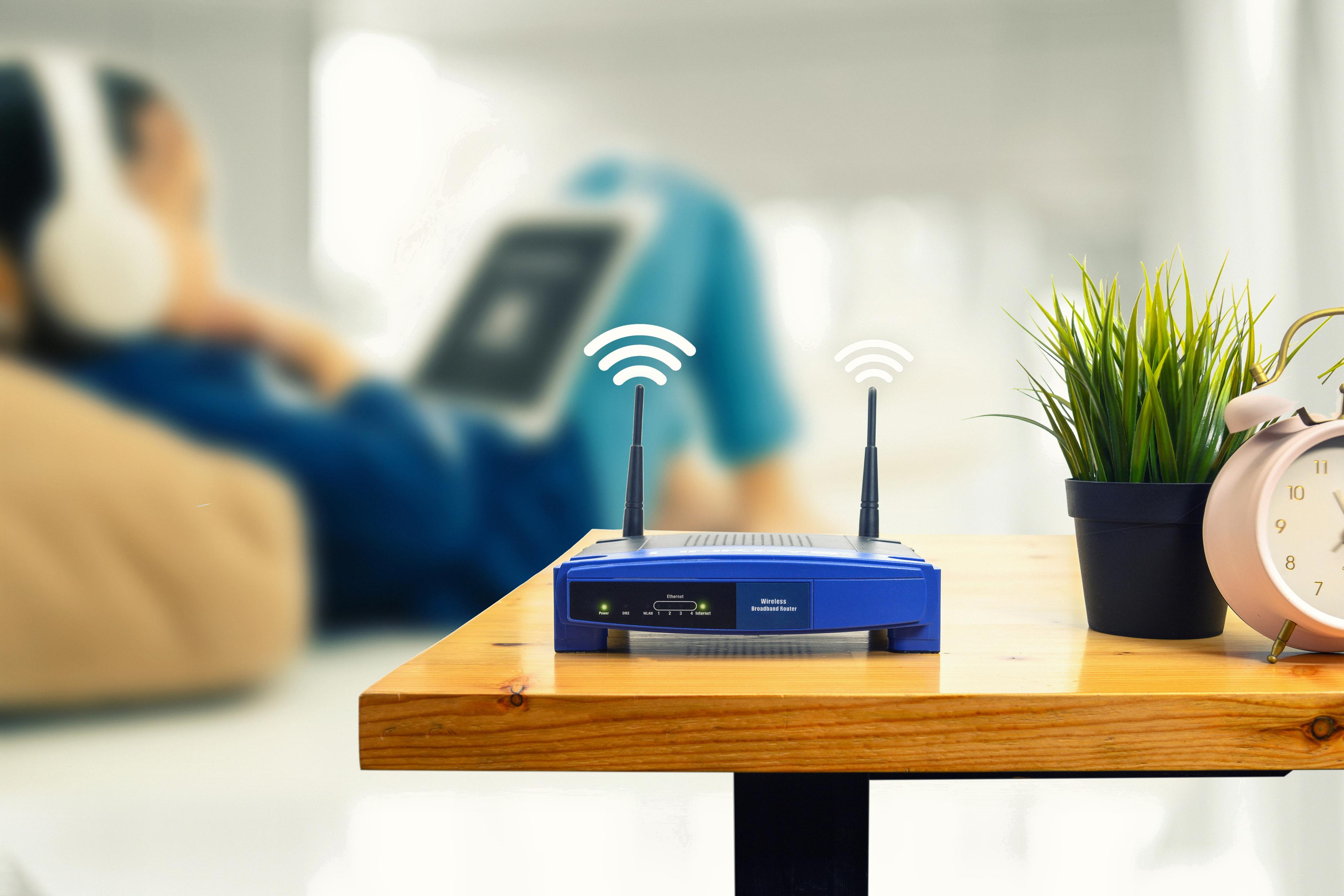
Obtaining WiFi Without a Carrier
Getting Wi-Fi without a carrier or internet service provider (ISP) can be done through various methods. Here are five options:
1. Mobile Hotspot: This is one of the easiest ways to get Wi-Fi without an ISP. You can use your smartphone as a hotspot and connect your laptop to it to get internet access. Most smartphones have a built-in mobile hotspot feature that allows you to share your cellular data with other devices.
2. Tether Your Smartphone or Tablet: Tethering allows you to use your smartphone’s or tablet’s cellular data to provide an internet connection to your laptop. You can do this by connecting your laptop to your smartphone or tablet using a USB cable or via Bluetooth.
3. Find a Public Wi-Fi Network: You can get free Wi-Fi from public places such as coffee shops, libraries, and restaurants. These places often offer Wi-Fi with no password required, but you shold be cautious when using free public Wi-Fi as it can be risky.
4. Use a Wi-Fi USB Dongle: A Wi-Fi USB dongle is a small device that you can plug into a USB port on your laptop to get Wi-Fi. These dongles are often sold by cellular carriers and can be used with a prepaid data plan.
5. Share Someone’s Internet: If you know someone who has Wi-Fi and is willing to share it, you can connect to their network and use their internet. You can do this by asking them for their Wi-Fi password or by connecting to an open network if they have one.
There are various methods to get Wi-Fi without a carrier or ISP. You can use a mobile hotspot, tether your smartphone or tablet, find a public Wi-Fi network, use a Wi-Fi USB dongle, or share someone’s internet.
Accessing the Internet Without an Internet Connection
To get internet access without an internet connection, you can try the folowing options:
1. Use a Wi-Fi hotspot: If you have a smartphone with a data plan, you can enable the Wi-Fi hotspot feature to share your phone’s internet connection with other devices. Simply go to the settings menu on your phone, look for the “Personal Hotspot” or “Tethering” option, and turn it on. Once you’ve set up a password, you can connect your other devices to your phone’s Wi-Fi network and start browsing the web.
2. Use a public Wi-Fi network: Many public places like cafes, libraries, and airports offer free Wi-Fi to their customers. You can connect to these networks and use the internet without paying for a data plan. However, be aware that public Wi-Fi networks can be less secure than a private connection, so avoid entering sensitive information like passwords or credit card details.
3. Use a wired connection: If you have an Ethernet cable and a device with an Ethernet port (like a desktop computer), you can connect to a wired network to access the internet. Look for a wired connection in your home or workplace, or visit a public location with Ethernet ports like a library or internet cafe.
4. Use offline resources: If you don’t need to access the internet for a specific task, you can use offline resources like books, magazines, or pre-downloaded files. You can also use apps or software that work offline, like word processors or games.
Obtaining Free WiFi at Home Without a Router
Getting free WiFi at home without a router can be a bit challenging, but there are still some options that you can explore. Here are some ways to get free WiFi at home without a router:
1. Share Your Smartphone’s Internet Connection: Most smartphones have a feature that allows you to share your cellular data connection with other devices. You can turn on this feature and use your smartphone as a mobile hotspot to connect your laptop or other devices to the internet.
2. Use a Hotspot Database App: There are several hotspot database apps avalable that can help you find free WiFi hotspots in your area. These apps can be downloaded on your smartphone or tablet and can help you connect to the internet without a router.
3. Buy a Portable Router: Portable routers, also known as travel routers, are small devices that can be used to create a WiFi network. You can connect your smartphone’s cellular data connection to the portable router and use it to connect other devices to the internet.
4. Visit Popular WiFi Hotspot Locations: Many public places offer free WiFi, such as cafes, libraries, and parks. You can visit these locations and connect to their WiFi networks without a router.
5. Look for Hidden WiFi Networks: In some cases, there may be hidden WiFi networks in your area that you can connect to. Use your smartphone’s WiFi scanner to search for hidden networks and see if you can connect to them.
Getting free WiFi at home without a router may require some effort and creativity, but there are still ways to connect to the internet without having to pay for a router or a monthly internet plan.
Conclusion
Wi-Fi has becme an essential part of our daily lives, offering us the freedom to connect to the internet from anywhere, at any time. It has revolutionized the way we communicate, work, and access information, making it easier and more convenient than ever before. From mobile hotspots to public Wi-Fi networks, there are various ways to get connected without an internet service provider. However, it’s important to ensure that you take necessary precautions to protect your privacy and security while using Wi-Fi. By following the proper safety measures, you can enjoy the benefits of Wi-Fi without any worries. In today’s world, Wi-Fi has become a basic necessity, and it will continue to play a significant role in shaping our digital future.

